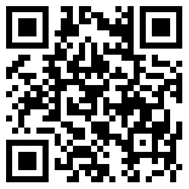
2019年避免设计师疲劳的10种方法
2019-02-05 1402 0
这将在今年的某个时候发生;你将面临设计师的精疲力竭。对创意人员来说,精疲力竭是一个永无止境的过程,这是一个非常普遍的现象。(你不能因为不工作就停止思考。)但是你可以做一些事情来帮助自己减轻倦怠,让自己更有活力,更专注。这是你的新年清单。(看起来是个不错的决定,对吧?)远离你的办公桌每天安排时间远离你的工作。“午餐时间”是有原因的。它给你时间从你正在做的事情中休息一下,恢复精神,带着新的能量回到工作中来。你不需要在传统的午餐时间休息,甚至也不需要在午餐时间休息,但你确实需要在白天利用这段时间来充电。养成每天把这段时间隔掉的习惯,做一些能让第二天的工作不那么累人的事情:散散步;去健身房;和朋友共进午餐;在社交媒体上工作充满了“妙招”,可以让你避免在网上浪费时间。但是,如果你应该工作一段时间,浏览Insta,然后回到它呢?快速工作可以帮助你更有效率。如果你需要启动大脑中那一小部分创造性的思维,那么看图片和视频会让你特别精神抖擞。但是这里有个技巧可以让你在开始和结束时都能工作。你不能让停顿扼杀你的工作效率。这不是一个适用于所有人的建议,但是一些设计师从微小的、“有计划的”干扰中获得了很多价值。参与到设计挑战中来准备好跳出你的舒适区去设计。应对设计挑战。这些小事件通常由一个主题组成,在这个主题中,您被提示在特定的时间段内每天或每周设计特定的东西。其他人经常在同一时间做同样的事情(和同样的挑战),在一个地方展示工作。设计挑战的伟大之处在于它可以成为日常生活中有趣的消遣。真的没有什么利害关系,你可以按照自己的方式进行创作。设计挑战:每日提示帮助你跳出思维框架;每日UI挑战:每天新提示,坚持100天。如果你还没有准备好迎接挑战,那就看看Project 365吧,这是一位设计师在2018.4年每天都会展示的一个新设计项目。放慢节奏你真的在期待假期吗?把它记在日历上。然后给自己安排一分钟、一天或一周的时间。仅仅因为你有时间休息,并不意味着你在放慢速度。有时候假期和不工作的时间也会很忙碌,所以计划一些严肃的休息时间就显得更加重要了。每个人都需要以不同的方式休息。有些人可以花一天的时间感觉充满了电。另一些则需要一周的时间来让大脑休息。只是不要把你的慢下来的时间塞满项目。你必须离开电脑。计划在你减速的时候抛弃技术(或者只允许在特定的时间签到),以从休息中获得最大的好处。不要陷入单调的日常工作中。尽管设计项目可以解决不同的问题,但是过程中的某些部分可能会变得平淡无奇。混合任务,邀请团队的其他成员进行头脑风暴,混合你一直在做的事情。就像锻炼不同的肌肉群一样,重新规划你的一天可以伸展大脑(和创造性)肌肉。寻找一个网络或对等组如果你没有一个稳定的设计对等组,现在是时候去寻找那个组了。无论你是加入一个专业的网络组织,参加一个会议,参与社交媒体对话,还是仅仅邀请你的导师共进午餐,避免精疲力竭的关键要素之一就是保持精力充沛。有时候你只是需要发泄一下。其他时候,你需要一个新的视角来进入正轨。开发你的网络。每个月花几个小时倾听别人的意见,并谈论你的设计挑战。不要让所有这些会议都变成牢骚满腹的会议,而要谈论工作中的挑战和解决方案。有时候,解决问题的最好方法是与那些从另一个角度看问题的人分享。如果可以的话,远程办公交通拥堵、上班时间过长以及在工作场所与各种各样的人打交道对一些设计师来说可能是一个挑战。你可能需要一个安静的空间来工作。你可能需要大量的白噪音来做到最好。或者也许你效率最高的时间不属于朝九晚五的规律。问问你的雇主你是否可以远程工作。即使只是一周一天,或者一个月几天,在一个符合你的自然规律、没有干扰的环境中工作也能让你感觉更有条理、更有条理。,这将
 13
13
评论区(0)
正在加载评论...
相关推荐
-
 设计欣赏
设计欣赏
看不见和酒店今晚团队创建一个概念性
2025-02-26 1866 -
 行业资讯
行业资讯
2025美国新星设计奖开启全球征稿
2025-02-24 1851 -
 设计欣赏
设计欣赏
设计创新:大理石的外观具有瓷砖的耐
2025-02-19 1845 -
 设计欣赏
设计欣赏
设计区的新展示室的计划
2025-02-26 1841 -
 设计欣赏
设计欣赏
重新设计阁楼
2025-02-28 1836 -
 设计欣赏
设计欣赏
设计艺术客房
2025-02-28 1771 -
 设计欣赏
设计欣赏
公寓设计
2025-02-18 1698 -
 设计欣赏
设计欣赏
一个明亮的公寓设计
2025-02-28 1684
